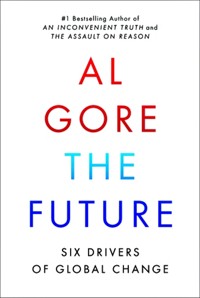Advertisement
Grab your lab coat. Let's get started
Welcome!
Welcome!
Create an account below to get 6 C&EN articles per month, receive newsletters and more - all free.
It seems this is your first time logging in online. Please enter the following information to continue.
As an ACS member you automatically get access to this site. All we need is few more details to create your reading experience.
Not you? Sign in with a different account.
Not you? Sign in with a different account.
ERROR 1
ERROR 1
ERROR 2
ERROR 2
ERROR 2
ERROR 2
ERROR 2
Password and Confirm password must match.
If you have an ACS member number, please enter it here so we can link this account to your membership. (optional)
ERROR 2
ACS values your privacy. By submitting your information, you are gaining access to C&EN and subscribing to our weekly newsletter. We use the information you provide to make your reading experience better, and we will never sell your data to third party members.
Environment
‘Cool It’
Bjørn Lomborg sheds new light on the climate-change debate
by Jovana J. Grbić
March 28, 2011
| A version of this story appeared in
Volume 89, Issue 13
Fewer topics in contemporary science and technology policy have generated as much controversy or vociferous debate as global warming (more recently branded as climate change) and, more important, how to mitigate its effects. International treaties, such as the Kyoto protocol, and recent conferences, such as last year’s United Nations Climate Change Conference in Cancún, have largely paid lip service to actionable change and technology aimed at eradicating the precursors and causes of global warming.
In the middle of this stalemate is an increasingly hostile rhetoric that has bifurcated into divergent, unyielding camps: Either you believe that climate change and greenhouse gas emissions are frauds, period, or you believe that the problem is so imminently dire that surely the end of the world is nigh.
“Fear has been ruling the climate debate,” declares Bjørn Lomborg in the opening minutes of “Cool It,” proclaiming what is a sort of mantra for this film, released this week on DVD. Far from dismissing the looming reality of climate change and global warming, Lomborg is simply suggesting that it isn’t the impending catastrophe that media and scientists have exhorted us to believe. Fueling these misconceptions, Lomborg believes, are popular cultural messages and movies that simply exaggerate claims and do nothing to add to a productive conversation about global warming.
In 2010, for example, hundreds of millions of people participated in Earth Hour, a collective global undertaking to turn lights off for an hour. Many of them undoubtedly lit candles instead, which, according to Lomborg’s sources, produce twice the CO2 emissions of a light bulb. The $20 trillion in proposed funding to fight global climate change, even if appropriated, would result in only a 0.1 °F temperature effect by the end of the century, Lomborg writes in “Cool It,” his 2007 book on which the movie is based. Something is not working.
Lomborg, who also wrote the controversial 2001 environmental book “The Skeptical Environmentalist,” was in 2004 named one of the Time 100, the magazine’s list of the world’s most influential people. He runs the Copenhagen Consensus Center, where he brings together some of the world’s top economists, including five Nobel Laureates, to brainstorm how to solve the world’s most pressing problems. In no way denying the very real phenomenon of climate change, “Cool It” is instead a polemic on contemporary global problems that merit our action and attention right now and that, if solved, would simultaneously mitigate climate effects as a bonus.
The problems that keep Lomborg up at night—AIDS, malaria, lack of access to clean drinking water—are far more important to developing countries than global warming. Nothing illustrates the schism in priorities better than the juxtaposition of two classroom scenes, one in rural Africa and one in urban England. In each case, Lomborg asks the students what their priorities are, what they wish for, and what frightens them. The African students wish for basic luxuries that we take for granted, such as a house and a car, with most rating their top priority as health care. The British students, who are warm, safe, comfortable, and fed, worry mostly about global warming and our planet’s demise, drawing pictures and describing scenarios that would make Edgar Allan Poe cower in a fetal position.
In “Cool It,” far from harboring anti-climate-change beliefs, Lomborg largely focuses on the science and technology advances that must occur to counteract global warming; to make energy, and especially alternative energy, cheaper; and to solve some practical problems in the meantime. These include revolutionary advances in garnering energy, such as water splitting, artificial photosynthesis, and reactors fueled by nuclear waste. Clearly in awe of scientists, Lomborg touches on adaptation—the notion that global warming, and certain inconveniences thereof, will impact humanity but that we can counteract these effects with smart technology, which includes geoengineering.
To be sure, “Cool It” has an agenda, as does “An Inconvenient Truth,” or any other subjective work espousing a decided point of view. “No matter what I found over the next year,” filmmaker Ondi Timoner said of undertaking this endeavor with Lomborg, “it was worth taking on this project to see if perhaps I could create a film that would help push through the polarizing logjam that had become the never-ending (and extremely expensive) climate debate toward real and practical solutions.”
Whatever side of the climate-change debate you fall on, seeing this film will make you rethink certain positions and priorities while reinforcing the immutable, inescapable fact that we simply must invest in alternative energy technologies and the scientists who are revolutionizing them.




Join the conversation
Contact the reporter
Submit a Letter to the Editor for publication
Engage with us on Twitter